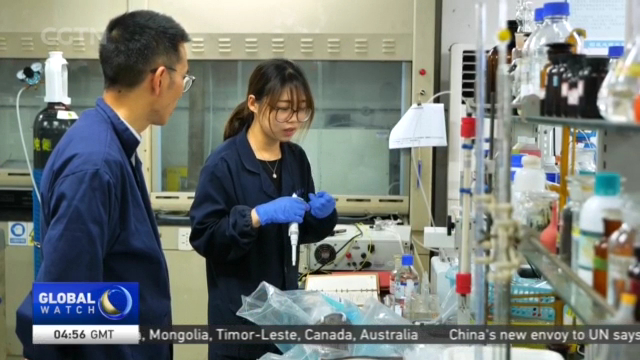
14:21, 03-Aug-2019
Trash Redefined: Where does all of Shanghai's sorted garbage go?
Updated
14:42, 03-Aug-2019

As the first city in China to start mandatory garbage sorting for residents, Shanghai hopes to treat trash in different ways. And recycling is key. But most residents only see the garbage trucks carry the trash away. CGTN reporter Yang Chengxi shows us where it goes and what happens to it after it's collected.
The entire city of Shanghai is now mobilized to sort garbage. Of the 26 thousand tons of trash produced each day in the city, the majority is food and residual waste. So where does it all go?
First stop, a truck. Shanghai now has over 3 thousand trucks to transport residual waste and close to a thousand for household food waste. They roam across communities and carry the garbage to the second stop: a transfer station. That's where the garbage is compressed to half its size in order to be carried either by land or water to the final stop: a processing plant like this one on the outskirts of the city.
This facility takes in about a tenth of Shanghai's total food and residual waste each day. It used to be a landfill but in 2014 the company in charge closed it down and started to use more modern waste processing methods. The plant makes money by receiving fees from the municipal government, and also by selling electricity, mostly generated by burning trash.
YANG CHENGXI SHANGHAI "This incinerator is working nonstop, burning 500 tons of residual waste per day. If you don't mind the unbearable smell of burning garbage, you can get an amazing look at what happens through this window."
The facility has five of them. Treatment of household food waste, on the other hand, is a spectacular scene.
YANG CHENGXI SHANGHAI "And all that stuff goes through here. The machines extract and recycle the oil, and the remains get grinded into a paste."
Then the paste fills up these fermentation towers to produce methane gas. Using these two methods, each ton of residual waste and food waste can generate 500 and 150 kilowatt hours of electricity respectively.
So, how has garbage sorting changed things around here? Well, food waste here used to look like this. Now most of the bottles and jars are gone, which makes it easier to process. On the other hand, burning purer residual waste creates less fly ash, which is the main waste processing leftover.
CHEN WEIHUA DEPUTY DIRECTOR, LIMING RESOURCE RECOVERY CENTER "With more efficient burning, fly ash is limited to no more than 2 percent of the total garbage volume, which means that our facility is now capable of recycling 98 percent of trash that comes in here."
The facility is expanding, and experts say maintaining a clean image is important: as China is building more processing centers like this. Pushback is expected from residents nearby who see the big chimneys.
LI CHANGJUN RESEARCHER, FUDAN UNIVERSITY "The not-in-my-backyard effect is very serious."
Emissions from this process station, like many others, are up to EU standards, which are the strictest worldwide.
Since 2014, China implemented higher emission standards for new and existing plants. As the government continues to promote garbage incineration, experts say making sure they conform to the high standards remains an imperative.
Speaking of pollution, what about sorted hazardous waste like batteries and paint? Where do they go? Professor Lou Ziyang from Shanghai Jiaotong University specializes in waste pollution control. He says there are about 29 facilities in Shanghai alone that process hazardous waste, and those from resident communities account for less than 1 percent.
LOU ZIYANG PROFESSOR, SHANGHAI JIAOTONG UNIVERSITY "I am not worried about domestic hazardous waste at all. The current system is more than sufficient to handle it, since that kind of waste is too well dispersed to pose a real risk."
Experts say garbage sorting will greatly help the disposal chain, as different types of trash are all ending up where they should be.
In the next episode, we'll look at recyclables. But our focus is not the garbage itself, it's on the people behind it, the urban waste pickers.
SITEMAP
Copyright © 2018 CGTN. Beijing ICP prepared NO.16065310-3
Copyright © 2018 CGTN. Beijing ICP prepared NO.16065310-3